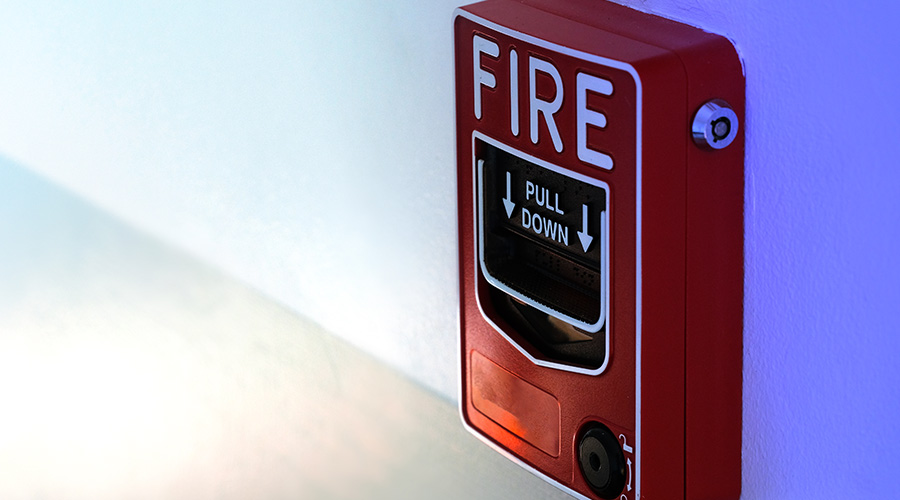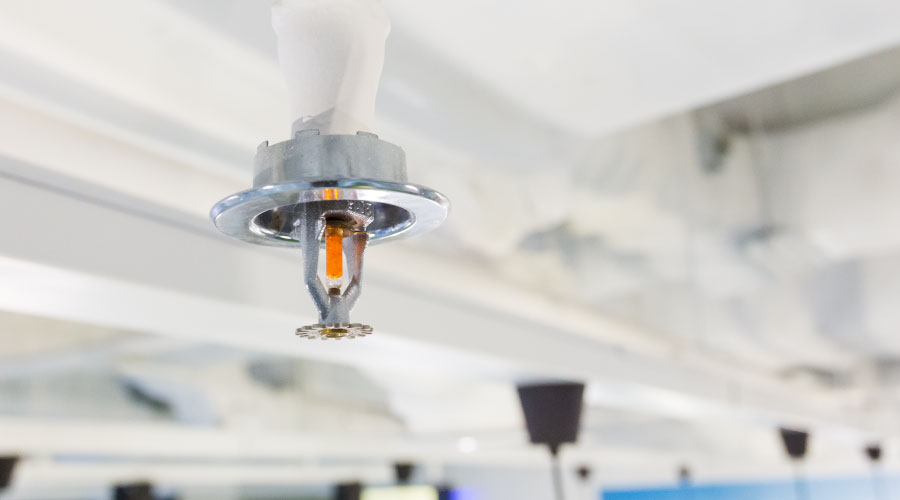Halon Replacements: Inert Gas, Clean Agents And Water Mist Systems
The principle behind inert gas systems is reasonably simple: Once sensors determine that a fire (or threat of fire) exists, atmospheric gases are released into the space to lower the amount of oxygen. Essentially, the introduction of higher concentrations of other atmospheric gases suffocates the fire.
The key for manufacturers of inert gas systems is to achieve the right balance of gases. It’s a tricky matter.
Oxygen levels above 15 percent allow combustion to continue, according to Joe Behnke, manager, technical services for engineered systems in Tyco’s fire suppression and building products division. “Below 10 percent oxygen, and the concentration does not support human life,” he says.
The balance of other percentages of gases is vitally important, too. That’s because carbon dioxide in concentrations above 10 percent is toxic to humans.
Generally, manufacturers of inert gas fire suppression systems combine argon, nitrogen and carbon dioxide — all naturally occurring gases in the Earth’s atmosphere — to achieve fire suppression.
Clean Agents
After halon was banned, other “clean agent” systems were developed that have no known ozone-depleting capacity.
From a chemist’s perspective, two main types of clean agent systems have replaced Halon 1301. Both are halocarbons:
- Fluorinated ketones: The structure of these chemicals contains carbon, fluorine and oxygen.
- HFCs: Hydrofluorocompounds (HFCs) contain no chlorine or bromine — the two ozone-depleting elements identified by the Montreal Protocol. The chemical structure of these agents contains carbon, hydrogen and fluorine. These were the very first halocarbon agents developed after the Halon 1301 ban.
Each clean agent is stored as a liquid at room temperature but becomes gasified by the delivery nozzles, according to Brad Stilwell, manager of new product development for Fike Corp.
As a gas, they displace air and work “by taking the heat out of the fire,” says Joe Ziemba, a marketing manager for 3M’s Novec product.
To a layperson, that means that the molecular structure of halocarbons chemically reacts with other molecules whenever a fire is present, chemically destroying the propagation of flames.
Making the Choice
Inert gases will never be banned by findings from climate change agreements or government organizations because the gases they use occur naturally in the atmosphere. They do not harm the environment and are not toxic to human beings. They take slightly longer — up to 60 seconds to suffocate a fire — than halocarbon compounds. Because they are stored in gaseous form, they also require significantly more canisters than the halocarbon compounds.
But inert gas canisters can be located much further away from a protected enclosure than canisters of halocarbon clean agents. Most experts say that inert gases can be run in piping up to 400 feet, whereas clean agents require positioning of canisters inside, immediately outside, or directly above a protected enclosure because of their lower viscosity and lessened ability to flow inside suppression system piping.
Whether using gases or liquefied compounds, both systems are “total flooding” suppressants — meaning that to work effectively, they have to flood the enclosure. This requires what Behnke calls “enclosure integrity.”
“Once the system is discharged, there’s minimal cleanup,” he says. “But they require a 10-minute ‘hold time’ to ensure that the fire is extinguished.”
Protected enclosures that use clean agent systems should conduct door-fan tests to determine enclosure integrity, says Stilwell. These tests can be conducted using National Fire Protection Association (NFPA) Standard 2001, which can also be used for smoke and refuge tests for other areas of a building.
Because of the higher pressures required for inert gases, enclosures that use these systems should be appropriately vented to release pressure while ensuring that oxygen is effectively displaced.
The Alternatives
According to Jelenewicz, water mist technology is also being used as an alternative to halon.
“Water mist systems use a very fine water spray to extinguish a fire and generally require less water than a standard sprinkler system to adequately control a fire,” he says.
As a result, water mist systems use smaller diameter piping and do not weigh as much as a standard sprinkler system. Because of these qualities, water mist systems have been used to protect a diverse array of hazards that include passenger ships, machinery spaces, museums and locations with limited water supplies.
Facility executives who might not need to protect a vital data center or who might have a higher threshold for risk are also considering pre-action sprinkler systems as an alternative to halon. These systems use a dual-sensor system designed to prevent water from moving into the piping above a protected area unless a fire is detected — thereby mitigating the potential for damage caused by leaks or false alarms.
Related Topics:














